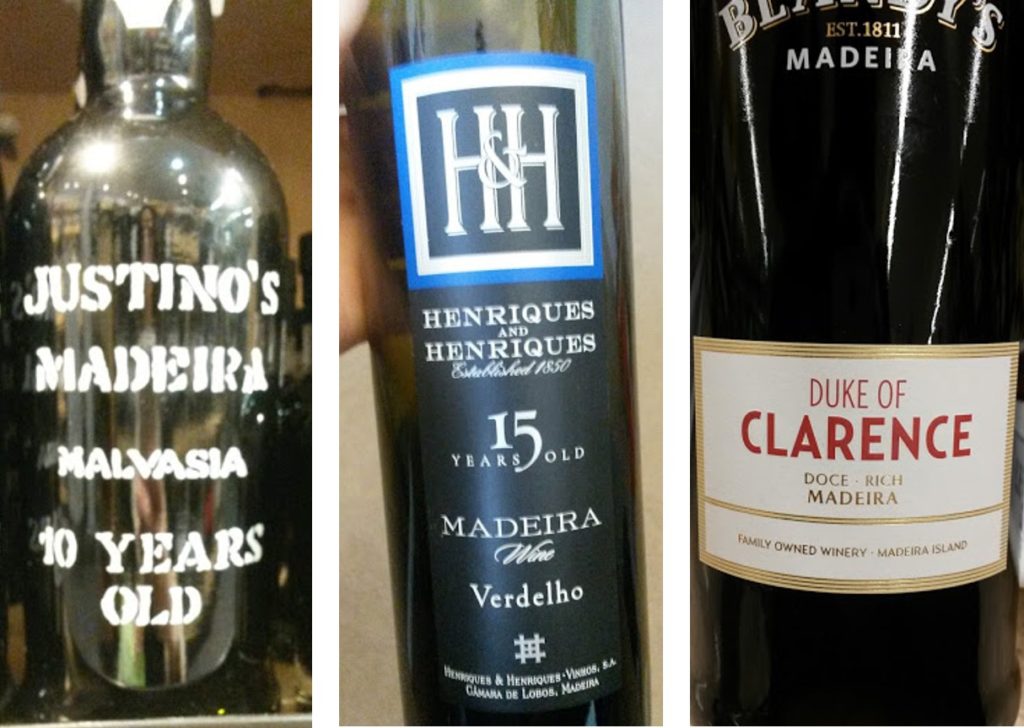I spent so long on the last post discussing Port that I ran out of time to talk about Madeira. So this brief (I promise) post gives a quick overview of the other great fortified wine from Portugal.
Only made on the island of Madeira, the wines are fortified (during fermentation in the case of higher quality wines, post maturation for the cheaper products which are effectively just sweetened and coloured).
Where Madeira differs so much from other fortified wines is the unique “Maderization” process which originally occurred by accident: Wine being transported on long sea journey’s across the Equator and back were exposed to prolonged heat and sun which altered their flavour profile. Clearly embarking on long sea voyages would be an onerous and not very cost effective way to make these wines today and whilst I won’t go into detail about how this process is now recreated (ie Estufa versus Canteiro) they effectively ‘cook’ the wine – caramelizing the retained sugars as well as oxidising the wines by long exposure to very hot conditions – giving them their distinctive ‘rancio’ aromas.
The great news is that this ‘cooking’ process renders Madeira virtually indestructible and they are amongst the longest lived of all wines (a wine from 1795 was recently sold at auction!) It’s also worth noting that once opened they can last months and months in the fridge (unlike Sherry or Port).
What to expect from these wines? A dazzling array of flavours which change depending on age and grape variety and can range from citrus and crisp apple with almond notes through to walnuts, caramel, smoke, dried fruits (raisin, fig), vanilla, molasses, chocolate, cinnamon and honey. The four ‘noble’ varieties used are all white grapes: Sercial, Verdelho, Bual/Boal and Malmsey (Malvasia) – these effectively increase in sweetness from dry through to cloyingly rich/sweet and the colour also deepens with age. What all the wines have by the bucketful however is searing acidity which gives a lovely structure to even the richest, sweetest iterations.
There are a mind boggling number of terms used on Madeira bottles most of which relate to their age or to their specific style – don’t panic though, below is a quick overview:
 As a rule of thumb any wine with 10 years+ ie Special Reserve (10 years) Extra Reserve (15 years) and Vintage (20 years) will be made from one of the noble white grape varieties with the variety listed on the bottle. *These will be good quality*
As a rule of thumb any wine with 10 years+ ie Special Reserve (10 years) Extra Reserve (15 years) and Vintage (20 years) will be made from one of the noble white grape varieties with the variety listed on the bottle. *These will be good quality*
Blends dominated by red grape Tinta Negra Mole (Negramoll) will generally make up younger wines: Finest (3 years), Reserve (5 years) as well as usually the wines labelled solely by style/sweetness level ie Rich or Full Rich. These latter styles are generally lower in price and whilst they don’t have the finesse of the varietally aged wines they are a popular entry level into Madeira wines (a good example is Duke of Clarence from Blandy.)
Other expressions you may see on labels include Rainwater – a Tinta Negra Mole dominated lighter style popular in America and Solera – recently reintroduced these are wines from a single harvest which follow the fractional blending system used for Sherry and are very rare, old and hugely expensive!
If you fancy giving a Madeira a go this Christmas, good producers to look for include: Blandy, H&H (Henriques & Henriques) and Justino’s. If drier styles are more your thing then look for Sercial as an aperitif wine (the younger the drier it will be with more apple and citrus character) or a Verdelho which I enjoy (particularly one with 10 or 15 years age): medium dry with lovely figgy, caramel and nutty notes. But for a wine to serve up with your Christmas pud, an opulent Malmsey with all its honey, molasses, dried fruit and chocolatey decadence would definitely do the trick!
